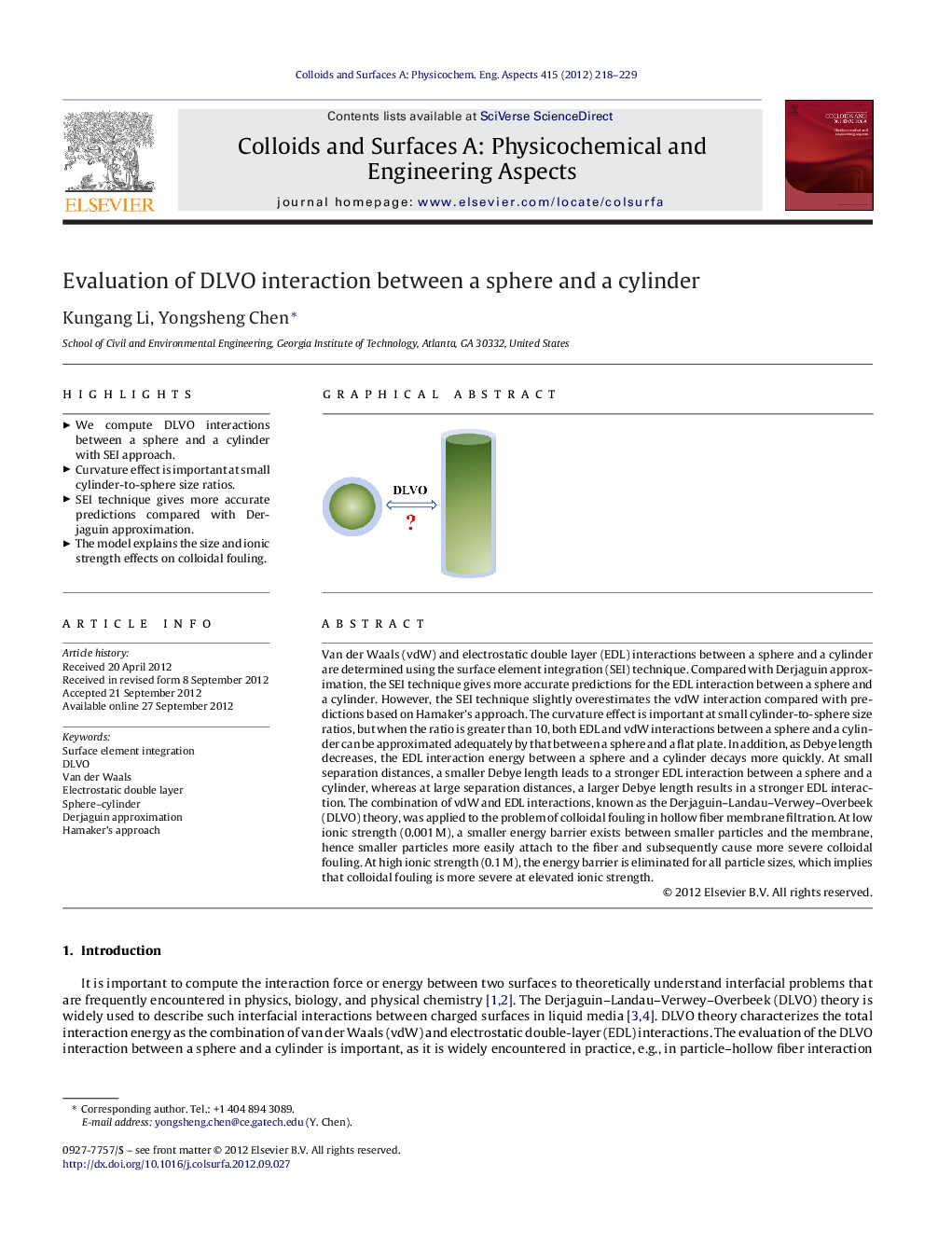| Article ID | Journal | Published Year | Pages | File Type |
|---|---|---|---|---|
| 593895 | Colloids and Surfaces A: Physicochemical and Engineering Aspects | 2012 | 12 Pages |
Van der Waals (vdW) and electrostatic double layer (EDL) interactions between a sphere and a cylinder are determined using the surface element integration (SEI) technique. Compared with Derjaguin approximation, the SEI technique gives more accurate predictions for the EDL interaction between a sphere and a cylinder. However, the SEI technique slightly overestimates the vdW interaction compared with predictions based on Hamaker's approach. The curvature effect is important at small cylinder-to-sphere size ratios, but when the ratio is greater than 10, both EDL and vdW interactions between a sphere and a cylinder can be approximated adequately by that between a sphere and a flat plate. In addition, as Debye length decreases, the EDL interaction energy between a sphere and a cylinder decays more quickly. At small separation distances, a smaller Debye length leads to a stronger EDL interaction between a sphere and a cylinder, whereas at large separation distances, a larger Debye length results in a stronger EDL interaction. The combination of vdW and EDL interactions, known as the Derjaguin–Landau–Verwey–Overbeek (DLVO) theory, was applied to the problem of colloidal fouling in hollow fiber membrane filtration. At low ionic strength (0.001 M), a smaller energy barrier exists between smaller particles and the membrane, hence smaller particles more easily attach to the fiber and subsequently cause more severe colloidal fouling. At high ionic strength (0.1 M), the energy barrier is eliminated for all particle sizes, which implies that colloidal fouling is more severe at elevated ionic strength.
Graphical abstractFigure optionsDownload full-size imageDownload as PowerPoint slideHighlights► We compute DLVO interactions between a sphere and a cylinder with SEI approach. ► Curvature effect is important at small cylinder-to-sphere size ratios. ► SEI technique gives more accurate predictions compared with Derjaguin approximation. ► The model explains the size and ionic strength effects on colloidal fouling.
